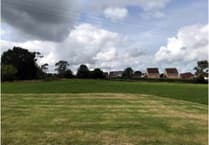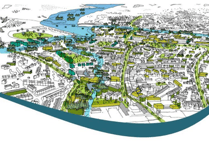A ‘VILLAGE design statement’ for Winkleigh has been finalised with the input of local residents and will be used as design guidance to influence future development of the area.
The design statement will be followed by a neighbourhood plan and has allowed people of the village to have their say on issues revolving around housing and traffic.
Gail Flockhart, chair of Winkleigh Parish Council, said: ‘The village design statement evolved out of the wider community plan, both representing the views of the community and providing Winkleigh with an invaluable resource for informing the shape of development.
‘The activities of the community to create the village design statement and promote its ethos, are an incredible endorsement of what communities can achieve.
‘Work on the village design statement now lays the ground for progressing a neighbourhood plan, which will be pivotal in providing a “statutory” instrument and greater say in how development happens locally.
‘At present, Winkleigh Parish Council consultations are “advisory”, so with pressure to accommodate further development, a neighbourhood plan is the next step towards Winkleigh having a stronger local voice.’
The design statement highlighted that residents were concerned new development should respect the clustered settlement shape of Winkleigh, and relate well to the existing village form. It also expressed that development should respect the rural views, and should feed traffic on to main roads skirting the village to avoid congestion and the necessity to drive through the centre of the village.
Torridge District Council praised the quality of the village design statement and endorsed it as a material planning consideration when looking at development proposals. The parish council will use it to help respond to planning applications and to influence discussions with developers.
Pauline Warner, one of the community members responsible for writing the village design statement, said: ‘When a community plan was published in 2014 — creating a village design statement to promote good design principles was one of the actions identified.
‘Groups of residents appraised the old and new parts of the village and drew up a series of design principles to reflect what they felt should be given as advice to builders and developers.’
To bring the publication to life, a bird’s eye view watercolour painting of Winkleigh was commissioned.
Mrs Warner added that painting aimed to show a village where all areas were connected and to promote traditional features so Winkleigh retained its distinctiveness.
She also said that the design looked ahead, so that future opportunities to improve the built environment were not sterilised and would be positively encouraged.
The painting will be on display in the village hall to be used as a focal point for the community and as a character appraisal of the village.
The watercolour illustration by local artist Brian Percival, was produced as part of the village design statement project, and was presented to Winkleigh Parish Council, recently.
The artwork, which is also on the booklet cover of the village design statement, was presented to Gail Flockhart, chair of the parish council, by Collin Gibson, chair of the Community Plan Action Group.
Mrs Flockhart said that the painting, which also forms the cover image for the village design statement, highlighted the historic core and more recent residential areas of the village, giving a vision of how old and new inevitably grow side-by-side into the Winkleigh of today.
The village design statement and community plan are available on the Winkleigh Parish Council website: www.winkleighpc.org.uk/Winkleigh-PC/Community_Plan__and__VDS_17682.aspx




